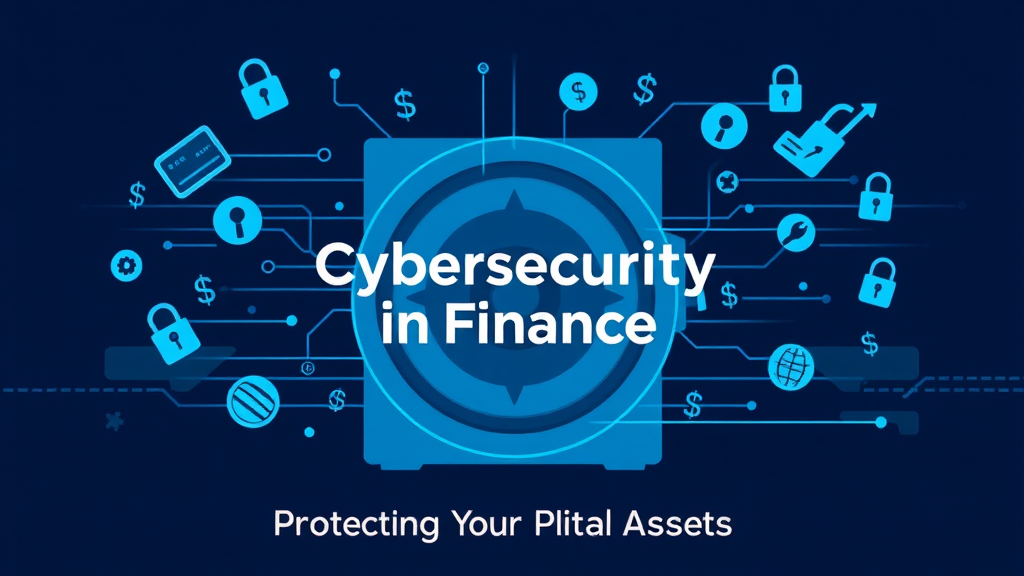Introduction to Cybersecurity in Finance
The Importance of Cybersecurity in the Digital Age
In today’s digital landscape, cybersecurity has become a critical component of financial operations. As financial transactions increasingly occur online, the risk of cyber threats escalates. Cybersecurity measures protect sensitive information, such as personal data wnd financial assets. This protection is essential for maintaining trust in financial systems. Trust is everything in finance.
Moreover, the rise of cryptocurrencies has introduced new vulnerabilities. These digital assets are often targeted by hackers seeking to exploit weaknesses in security protocols. For instance, phishing attacks and ransomware are prevalent tactics used to compromise accounts. Awareness of these threats is vital for individuals and organizations alike. Knowledge is power.
Additionally, regulatory frameworks are evolving to address cybersecurity challenges. Governments and financial institutions are implementing stricter guidelines to safeguard digital transactions. Compliance with these regulations is not just a legal obligation; it is a strategic necessity. Staying compliant can prevent costly breaches.
Investing in robust cybersecurity infrastructure is essential for any financial entity. This includes employing advanced encryption methods and regular security audits. Such measures can significantly reduce the risk of data breaches. Prevention is better than cure.
Overview of Digital Assets and Their Vulnerabilities
Here are 10 trending article titles for a financial website based on the latest news and analysis of financial trends: No input data
Common Cyber Threats to Digital Assets
Types of Cyber Attacks Targeting Cryptocurrency
Cyber attacks targeting cryptocurrency have become increasingly sophisticated. These attacks can take various forms, each with distinct methods and objectives. Understanding these threats is crucial for safeguarding digital assets. Here are some common types of cyber attacks:
Phishing: Attackers use deceptive emails to trick users into revealing sensitive information. This method exploits human psychology. Always verify the source.
Ransomware: Malicious software encrypts files, demanding payment for decryption. This can cripple operations. Backup data regularly.
Exchange Hacks: Cybercriminals target cryptocurrency exchanges to steal funds. These breaches can result in significant financial losses. Choose reputable exchanges.
DDoS Attacks: Distributed Denial of Service attacks overwhelm systems, causing downtime. This disrupts trading activities. Monitor network traffic closely.
Each of these attacks poses unique risks to investors and institutions. Awareness and proactive measures are essential. Protecting digital assets requires vigilance and education. Stay informed about emerging threats.
Case Studies of Major Security Breaches
Several high-profile security breaches have highlighted vulnerabilities in the cryptocurrency sector. One notable case is the Mt. Gox hack in 2014
Best Practices for Protecting Your Digital Assets
Implementing Strong Security Measures
Utilizing Multi-Factor Authentication and Cold Storage
Implementing multi-factor authentication (MFA) significantly enhances security for digital assets. By requiring multiple forms of verification, it reduces the risk of unauthorized access. This method is particularly effective against phishing attacks. Users should consider using biometric data or hardware tokens as additional layers of security. These measures create a robust defense.
Cold storage is another critical strategy for safeguarding cryptocurrency. By keeping assets offline, the risk of hacking is minimized. This method is ideal for long-term holdings. Investors should utilize hardware wallets or paper wallets for this purpose. These options provide a secure environment for storing private keys.
Combining MFA with cold storage creates a comprehensive security framework. This dual approach ensures that even if one layer is compromised, the assets remain protected. Regularly updating security protocols is essential. Staying informed about emerging threats is crucial.
The Future of Cybersecurity in the Cryptocurrency Space
Emerging Technologies and Their Impact on Security
Emerging technologies are reshaping the landscape of cybersecurity in the cryptocurrency sector. Innovations such as artificial intelligence (AI) and blockchain analytics are enhancing threat detection capabilities. These technologies can analyze vast amounts of data to identify unusual patterns. This
Regulatory Developments and Industry Standards
Regulatory developments are crucial for enhancing cybersecurity in the cryptocurrency space. Governments worldwide are increasingly recognizing the need for comprehensive regulations. These regulations aim to protect investors and ensure market integrity. He believes that clear guidelines will foster trust in digital assets. Trust is essential for growth.
Industry standards are also evolving to address emerging threats. Organizations are adopting frameworks that emphasize risk management and compliance. These frameworks help businesses implement effective security measures. He notes that adherence to these standards can mitigate potential vulnerabilities. Compliance is not optional.
Furthermore, collaboration between regulatory bodies and industry stakeholders is vital. This partnership can lead to the development of best practices and shared resources. He emphasizes that a unified approach will strengthen the overall certificate posture. Collective action is powerful. As regulations become more stringent, companies must adapt their strategies accordingly . Staying ahead of regulatory changes is essential for long-term success.
